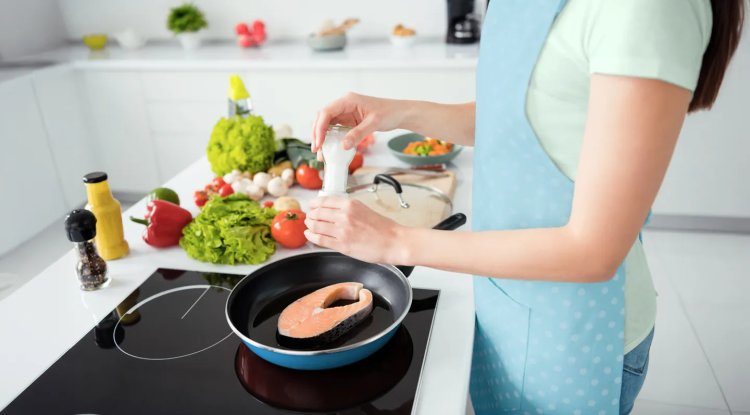Can Migraine Headaches Be Alleviated by Nerve Stimulation? A Startling and Hopeful New Instrument Is Discovered
If you are among the 20 to 40 million Americans who experience migraine headaches, you are undoubtedly familiar with the symptoms: nausea, light sensitivity, throbbing pain, and a desperate want for relief. Electrical nerve stimulation is a novel, but scientifically supported, method that is now being more widely used. Additionally, this medication recently became available over-the-counter, in contrast to so many other high-tech treatments that are still only available with a prescription.

Yes, the FDA has approved a wearable gadget that uses mild electrical pulses to zap your forehead in order to prevent or treat headaches. Although it seems like something from science fiction or TikTok health mythology, it has a solid neurobiological foundation, and there is mounting evidence that it would be worthwhile to give it a try.
Why Is the Cefaly Dual Such a Big Deal?

The Cefaly Dual is the name of the gadget in question. Sitting across your forehead, it resembles a futuristic headband and sends mild electrical signals to branches of your trigeminal nerve, one of the main neural highways involved in face sensation and, it turns out, migraine discomfort.
This gadget is not new. Although it has been prescribed since 2014, the FDA just approved its sale over-the-counter, making it considerably more accessible to those who are in dire need of a drug substitute or a way to lessen the frequency of their migraines.
However, how did the concept of forehead zapping as a legitimate migraine treatment come to be?
Reevaluating the Migraines' Primary Cause
It was once believed that migraines were mostly caused by problems with blood arteries; in other words, the pain was caused by the dilatation and constriction of vessels in and around the brain. Given that diseases like Raynaud's disease have comparable vascular patterns, that theory is reasonable. It clarified how migraines could be so upsetting without causing any long-term harm to the body.
The current understanding of migraines, however, is much more intricate and neurological in nature rather than vascular.
According to recent studies, there is aberrant nerve cell activation throughout the brain, which results in inflammation, chemical reactions, and a form of pain-signaling nerve hypersensitivity. Just one big player? The trigeminal nerve attaches to the brain's pain-sensitive lining after branching across your face. Directly targeting this nerve has emerged as a promising avenue for non-pharmacological treatments, such as electrical stimulation.
Is Nerve Stimulation Effective for Migraines?
To put it succinctly, there is proof that it works, but it is not magic.
In a 2013 clinical trial, 67 patients utilized the device for 20 minutes per day. After three months, individuals who got genuine stimulation as opposed to a phony, "sham" version needed less medicine and experienced noticeably fewer headaches. Almost four out of ten reported at least a 50% improvement in their symptoms.
More than half of the 2,300 users surveyed in another study were happy enough to continue using the device and even purchase it.
The gadget was tested in a 2019 trial as an acute migraine therapy.
What Drawbacks Can Migraine Nerve Stimulation Cause?
While there are always some disadvantages to every treatment, this one has comparatively few.
Side effects: When using the product, the most frequent complaint is a tingling feeling on the forehead. Few users find it unpleasant or bothersome enough to quit, although some find it odd.
You will require a 60-minute session to receive active migraine treatment.
Cost: The device costs approximately $499 at retail, and insurance does not yet cover it. That is a big financial commitment. A 60-day money-back guarantee, however, could lessen the pain if you are not confident it will work for you.
So, is this a game-changer for migraines?

Let us call it what it is: a positive step rather than a panacea.
The treatment of migraines will not be revolutionized overnight by nerve stimulation. But for individuals who can’t or don’t want to rely only on pharmaceuticals, it offers a drug-free, science-supported alternative that may lower both the number and intensity of attacks.
Moreover, it is now accessible without a prescription. That is a victory for independence and accessibility.
Conclusion: Is the Cefaly Dual a Good Option for Migraines?
If you have been trying unsuccessfully to treat your migraines, you might want to look into noninvasive nerve stimulation. It has few adverse effects, is safe for the majority of people, and provides some people with genuine relief. Although it is not inexpensive or a miracle, many people find that the fact that it is supported by science is more than enough to give it a try.
We will probably see even more specialized, individualized treatments for migraines as science advances and our knowledge of the condition grows. However, for the time being, this contemporary approach to migraine treatment using electrical pulses to soothe hyperactive nerves is a useful addition to the arsenal.
What's Your Reaction?




















